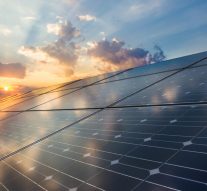
A solar future after Covid19
Energy 7 June 2020The cost of photovoltaic power has declined by 82% since 2010.
New solar ( and wind) farms will soon cost less than many of the world’s coal-fired power plants, and governments should invest in them to boost economies amid the coronavirus, according to the International Renewable Energy Agency. Coal plants with a capacity of up to 1,200 gigawatts will probably be more expensive to run by next year than new, large-scale photovoltaic solar plants.
“Renewables must be the backbone of national efforts to restart economies in the wake of the Covid-19 outbreak,” the Abu Dhabi-based Irena agency’s director general, Francesco La Camera, said in a report Tuesday. “We have reached an important turning point in the energy transition.”
Replacing 500 gigawatts of high-cost coal plants with solar and wind farms would reduce carbon emissions by about 1.8 gigatons, equivalent to 5% of CO2 emissions in 2019, and save consumers billions of dollars, Irena said. Power generated from coal mostly comes from the U.S., China, India, Poland, Germany, South Korea and Ukraine.
Irena expects the cost of installing renewables to continue falling in 2021 — to $0.043 kilowatt hour for onshore wind, down 18% from 2019, and to $0.039/kWh for large photovoltaic plants, 42% lower than last year.
“Auction results show this trend accelerating, reinforcing the case to phase out coal entirely,” Irena said.
Still, research from the Paris-based International Energy Agency suggests new power from wind and solar will fall this year for the first time in two decades as factory closures delay the construction of renewable facilities.
The cost of solar and wind energy could be consistently cheaper than conventional supplies by 2030, Irena said last January.
The trend is largely down to advances in technology and the increasing scale of projects. Photovoltaic power has seen an 82% decline in costs since 2010 and onshore wind 39%, according to Irena.
The energy sector is responsible for about three-quarters of global greenhouse gas emissions — mainly from burning coal, oil and gas — and governments must rapidly decarbonize their electricity grids to meet targets that keep global warming well below 2 degrees Celsius (3.6 degrees Fahrenheit).
Coal, which has long been considered the cheapest way of generating electricity, is now struggling to compete with energy from sunlight. The competition has grown so fierce that developers risk wasting more than $600 billion (€546 billion) through planned coal projects, according to analysis published in March by think tank Carbon Tracker Initiative.
Within a decade, the authors predict, it will be cheaper everywhere to shut down existing coal-fired plants and build new solar and wind plants in their place. That could shift the energy mix in coal-hungry countries like the US with governments hostile to efforts to halt climate change.
Cheap solar energy has now become a “no-regrets” solution, said Marcelo Mena-Carrasco, a Chilean former environment minister. “It doesn’t matter what your presidents think, it’s the market that’s doing the talking.”
The first solar photovoltaic cells were invented by researchers in the US in 1954, brought to markets through subsidies in Germany in the early 2000s, and made competitively cheap on a large scale in China after that. A study published in the journal Energy Policy in 2018 found that 60% of the fall in prices between 1980 and 2012 was because of government policies that stimulated market growth, like feed-in tariffs that pay consumers for unused energy they supply to the grid.
In Germany, which has the most installed solar power per person, such policies triggered investments that, in turn, led to rapid innovations, said David Wedepohl of German solar lobby group BSW. It created incentives for manufacturers to make solar panels and build new factories and machines.
Each time solar capacity has doubled, the total price of solar energy has fallen by about 30%. Analysts call this relationship a learning curve. The more solar plants are deployed, the more the technology comes down in price — though the gains flatten out over time.
Germany’s demand for solar power “not only installed a lot of solar, but it catalyzed the learning curve,” said Gregory Nemet, a professor at the University of Wisconsin-Madison who has written a book on how solar energy became cheap. In China, where most of the world’s solar panels are now made, production processes were refined further to bring prices down to levels that compete with coal.
In sunny parts of the world, average solar prices are on track to hit $0.01/kWh by 2035, according to analysis by clean energy advocate Ramez Naam in May. “In a purely open market, these incredibly low prices would drive the world’s remaining coal plants into bankruptcy, and steal some of the most profitable operating hours even from cheap natural gas plants,” he wrote.
But other analysts are less optimistic, questioning whether the learning rate can be applied to the total cost of solar or just the capital costs. Solar price predictions in sunny countries in the next couple of decades range from below $0.01/kWh to $0.025/kWh, which is still well below the cost of running existing coal plants.
Electricity grids must also fix problems of intermittency, said Auke Hoekstra, an electric vehicle researcher at Eindhoven University of Technology. Because skies are darker at night and in the winter, the attractiveness of solar depends on how well an electricity grid can manage demand and store energy.
What’s more, as renewable energy dominates grids, it lowers electricity prices while running, which erodes revenues for suppliers. This could offset gains in technology costs if better storage or demand solutions are not found, according to a new study published in the journal Renewable Energy.
Still, progress in these fields is also accelerating. Battery technologies, for instance, are making similarly rapid progress to solar, and electric vehicles could be charged at night as a way of spreading out demand. Access to cheap, abundant solar energy gives us a tool that we didn’t have in the past.


